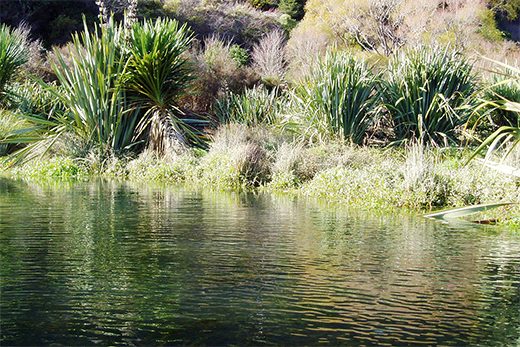Hawke’s Bay’s farmers, hunters and local authorities are working together to undo some of the centuries of damage to the region’s wetlands and create more wildlife habitat. During the last nearly 200 years of development, Hawke’s Bay has lost nearly 98 per cent of its original wetlands. Fish & Game’s Hawke’s Bay regional staff are trying to reverse at least some of that damage with an innovative five-year plan creating wetlands and habitat that not only will encourage waterfowl, but offer habitat for threatened and endangered species including the Australasian bittern. Helping with the project are farmers, landowners, hunters, Hawke’s Bay Regional Council, QEII Trust and the Department of Conservation. Fish & Game’s Hawke’s Bay regional manager Mark Venman says people are starting to realise just how many wetlands have disappeared. Top priority “With the loss of such a significant amount of Hawke’s Bays wetlands there is a need to restore drained wetlands or create new ones. During the last year our staff have been busy working with landowners to get the project moving.” Mark says the project is now Fish & Game’s top priority in the region. “We are now developing a five-year waterfowl enhancement plan focusing on providing habitat for waterfowl broods and creating connecting wetlands that establish habitat between our larger wetlands and shallow lakes.” Fish & Game Hawke’s Bay senior officer Nathan Burkepile moved to Hawke’s Bay last year and says the significant loss of wetlands hit him immediately. “While I was conducting aerial waterfowl population surveys in April last year, we flew over a large number of farm ponds. They had water but few waterfowl because they were utterly devoid of habitat,” says Nathan. Clean stock water “We have a chance to turn that around because with such a large number of livestock watering ponds, there is huge potential to create habitat for waterfowl along with providing clean stock water through strategic plantings and appropriate fencing.” The new habitat will help all waterfowl, including native species but Nathan says there is also an economic benefit to farmers. “This is a win-win situation for both farmers and waterfowl. Strategic fencing and plantings around stock ponds will not only establish habitat but also provide clean drinking water for livestock. “Research indicates providing clean drinking water will increase livestock weights by five to 25 per cent, which increases profits.” Funding help And farmers are showing an interest. During summer Fish & Game has been working with seven landowners to restore and create wetland habitat on their properties. The majority of these wetlands were previously drained and grazed, which required the blocking of drains and some land contouring to re-establish. Funding for these projects was provided through the Game Bird Habitat Trust, Hawke’s Bay Fish & Game funds, and the Wildlife Fund. Fish & Game says any landowners thinking of improving wildlife habitat on their properties should contact its Hawke’s Bay regional office for advice and funding help.



0 Comments
Leave a Comment